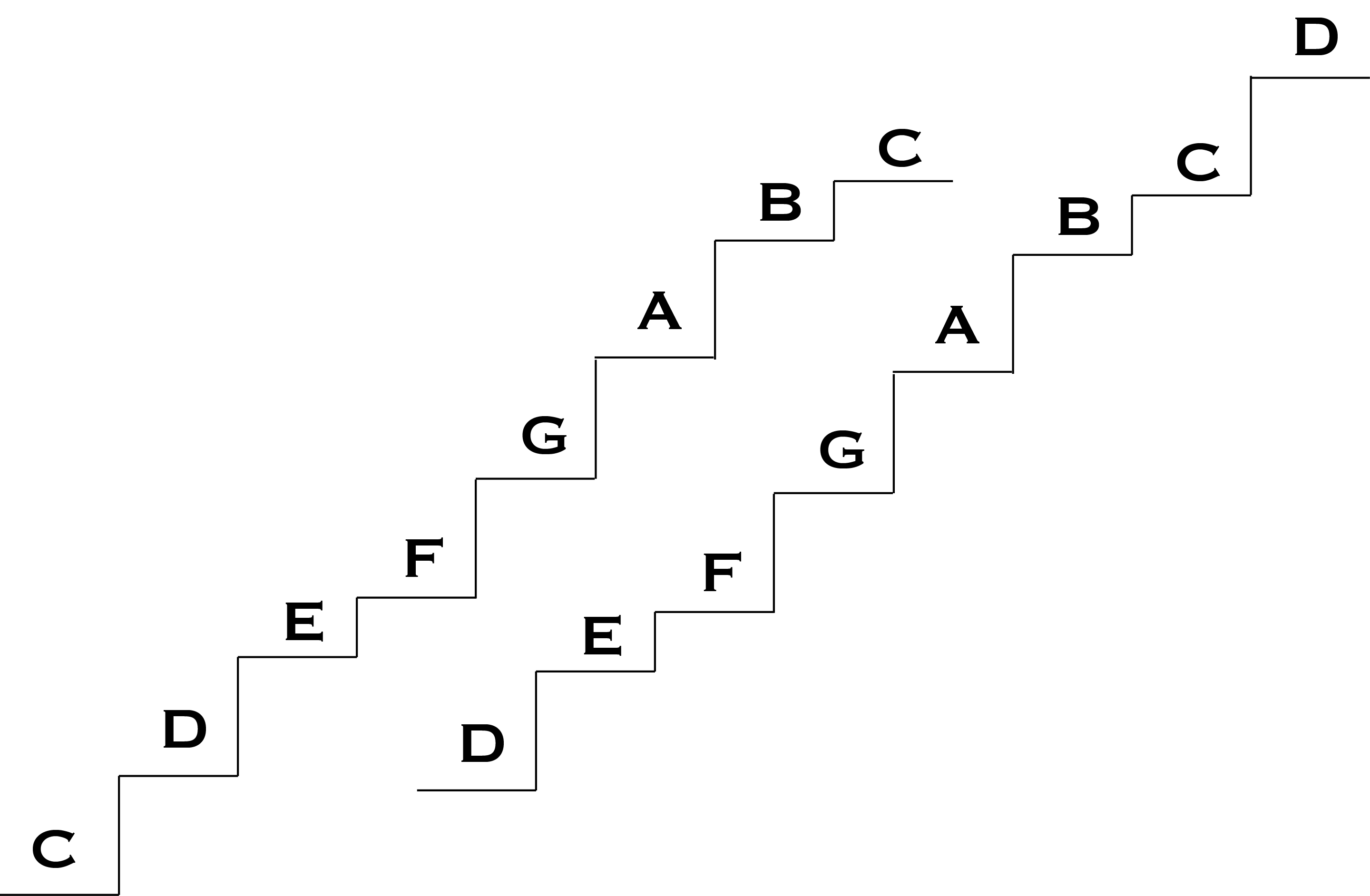Another history lesson
Pythagoras was a Greek scholar, philosopher and mathematician. He also invented the major scale.
He knew that the octave and the fifth had a fundamentally close relationship mathematically and he used this to come up with seven notes that we now call the major scale. It works like this:
- He started with a D note, the note a 5th up from D is A and the note a 5th down is G. Let's have those two as well.
- Five up from A and we have E and five down from G is C. Now we have D, G, A, E and C.
- Five up from E is B and five down from C is F. Now we have D, G, A, E, C, B and F.
Put them in order starting from D and you get D, E, F, G, A, B and C. When played in this order most of these notes were found to be the same distance apart. We now call this distance a whole step, it's the same as 2 frets on your guitar. Some of them however, the B and C and the E and F were only half that distance apart so they ended up with an uneven step pattern, some notes a whole step and others a half step apart. Here is a step pattern for a modern major scale and one for the Pythagorean scale.

They discovered that you could make scales with different flavours by using these exact same notes but starting from a different position because the step pattern changed. It turns out that what was important was not the sound itself but how they connected to each other and particularly to the note that you start from, the one that you base all of your harmonic decisions on. We now call these scales modes and give them Greek names like Ionian and Phyrygian, we also call the one starting from C our major scale. We still however group notes together like this and give them functions according to their distance from the starting note.
All with mathematics - mind blown - again.
Take Home
A scale is a set of notes arranged in a set pattern which gives it a particular quality.
The Video Lesson
In this video I run through the structure of the major scale. It is important that you understand that the major scale is simply a series of notes at fixed distances from each other. There's the first note, the 1, then another 2 frets away, then another 2 frets, 1 fret, 2 more frets, 2 more frets, another 2 frets, and 1 more fret to the last one. Every time!!!
Download the video here
Learning the fretboard
In the last lesson you find the chord tones all around the fretboard, now you'll find the rest.
- Use the whole, whole, half, whole, whole, whole , half step formula to play the major scale all over the fretboard.
- Try as much as possible to play it accross all 3 or 4 strings by using your ear to find the best note for each position.
